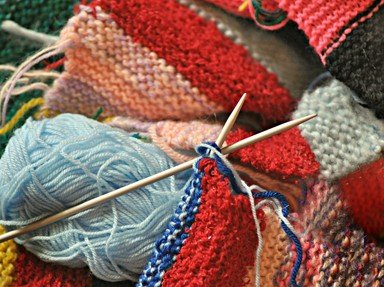Quiz Answer Key and Fun Facts
1. Wool is the most common fiber used in hand knit socks. It's so popular because of several properties that make it ideal for this purpose. Which of the following is NOT a reason for wool's popularity among sock knitters?
2. If you examine a sock (go ahead - you know you want to!), you'll notice that it's basically a tube with a bend in it. There are several ways to create that bend for your heel. Which of the following is NOT a common name for a type of sock heel construction?
3. It's generally a good idea to knit a sock with "negative ease". What is negative ease, and why is it important?
4. Which of the following is a popular brand of sock yarn?
5. What is the name of the technique used to close the toe in many sock patterns?
6. This pattern combines columns of knit and purl stitches to create a simple but very stretchy sock.
7. I prefer to knit my socks starting with the leg and ending with the toe. Some people prefer to knit toe-up socks. There are a few popular methods of casting on for such socks. True or False: One of the methods is called the "figure 8 cast on."
8. There are several ways to actually knit tubes for socks. Which of the following is NOT a common method/tool for knitting socks.
9. While it certainly varies from sock to sock, about how many yards of yarn do you think there are in a pair of adult sized socks knit from fingering weight (sock weight) yarn?
10. What is the best way to make sure your hand knit socks stand the test of time?
Source: Author
bowerbird77
This quiz was reviewed by FunTrivia editor
Bruyere before going online.
Any errors found in FunTrivia content are routinely corrected through our feedback system.

